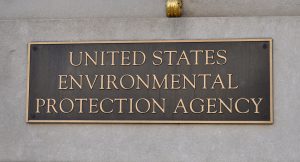15
Sep
EPA and CDC Mislead Local and State Officials and the Public on Safety of Mosquito Pesticides Used for Zika Virus
(Washington D.C. September 15, 2016) Beyond Pesticides today urged the U.S. Environmental Protection Agency (EPA) to immediately alert local and state mosquito control officials, elected officials, and the public throughout the U.S. to the fact that EPA’s key data reviews on the safety of widely used mosquito control pesticides, including naled and synthetic pyrethroids, are outdated and incomplete and the scientific literature raises safety concerns. In a letter to EPA, Beyond Pesticides said, “As local and state officials implement mosquito abatement programs to address the Zika virus, it is critical that they have complete transparent safety information that they are not currently getting from the Environmental Protection Agency (EPA).”
 Beyond Pesticides continues, “This information, specific to residential exposure to the insecticides naled and its main degradation product dichlorvos (DDVP), as well as synthetic pyrethroids, is necessary for officials on the ground to make fully informed decisions and for public right to know.”
Beyond Pesticides continues, “This information, specific to residential exposure to the insecticides naled and its main degradation product dichlorvos (DDVP), as well as synthetic pyrethroids, is necessary for officials on the ground to make fully informed decisions and for public right to know.”
According to EPA documents, the agency did not meet a planned 2015 deadline for a final review decision evaluating residential exposure to naled, a neurotoxic organophosphate insecticide that is currently being used in community mosquito spraying, and its highly toxic breakdown product DDVP. In addition to the toxic properties of naled, EPA has stated in review documents that it “has determined that the adverse effects caused by dichlorvos [DDVP] that are of primary concern to human health are neurological effects related to inhibition of cholinesterase activity.” There is also “suggestive” evidence of DDVP’s carcinogenicity, as well as concerns associated with its neurotoxicity, mutagenicity, and reproductive impacts.
Similarly, EPA has recognized in its documents that synthetic pyrethroids, including permethrin and phenothrin (sumithrin), must also have their assessments updated and completed, calling into question safety statements from EPA and the Centers for Disease Control and Prevention (CDC). Several pyrethroids are associated with cancer, hormone disruption, and reproductive effects, and thus have hazard and exposure concerns regarding widespread application for mosquito control. Phenothrin, for instance, “lacks acute, chronic, and developmental neurotoxicity studies that are required to fully evaluate risks to infants and children,” and for permethrin there are outstanding concerns regarding its developmental neurotoxicity.
According to EPA’s final work plan, published in 2009, the agency planned to begin public comment on a registration review decision for naled in 2014, with a final decision in 2015. “Given the widespread use of naled in South Florida, Puerto Rico and other states and territories over fears of the spread of the Zika virus, it is imperative that an updated risk assessment be presented for public review and comment, especially since there are important outstanding data and concerns regarding naled/DDVP exposures to residential bystanders,” Beyond Pesticides told EPA.
The use of naled in a South Carolina community last month also resulted in the death of 2 million bees. In 2012, the European Union banned naled, citing “Official Journal of the European Union” to human health and the environment.
In light of the identified hazards and unknown effects of exposure to both naled/DDVP and synthethic pyrethroids, Beyond Pesticides urges local and state officials to consider more closely the lack of efficacy associated with massive spray programs. Researchers question the efficacy of spray programs for adult mosquitoes, especially given the biology of the targeted mosquito, Aedes aegypti. This mosquito stays close to its breeding sites in residential areas and inside homes, suggesting that community spray programs are the least effective control measure.
Beyond Pesticides encourages an integrated approach to mosquito management that focuses on prevention through public education encouraging frequent removal of standing water, larviciding, and use of repellents. If prevention measures are enforced, the need to spray should be extremely limited, and balanced against the potential public health impacts of hazardous pesticides.
Download a copy of the letter here: http://bit.ly/2cFHThg.
Download a copy of the response from EPA here.
Download a PDF version of the press release here.
For more information on mosquito management, see www.beyondpesticides.org/mosquito.
Contacts:
Beyond Pesticides, Nichelle Harriott, [email protected], Jay Feldman, [email protected], 202-543-5450.











Awareness of which topical pesticides and deterrents is very important. I will be traveling in foot through South America for a year. What is your recommendation of available products, I should consider!
September 16th, 2016 at 11:57 amHi Santiago,
Thank you for your question. Please see our fact sheet on least-toxic mosquito repellents here to help you in your decision: https://www.beyondpesticides.org/assets/media/documents/mosquito/documents/LeastToxicMosquitoRepel.pdf
September 28th, 2016 at 9:43 am